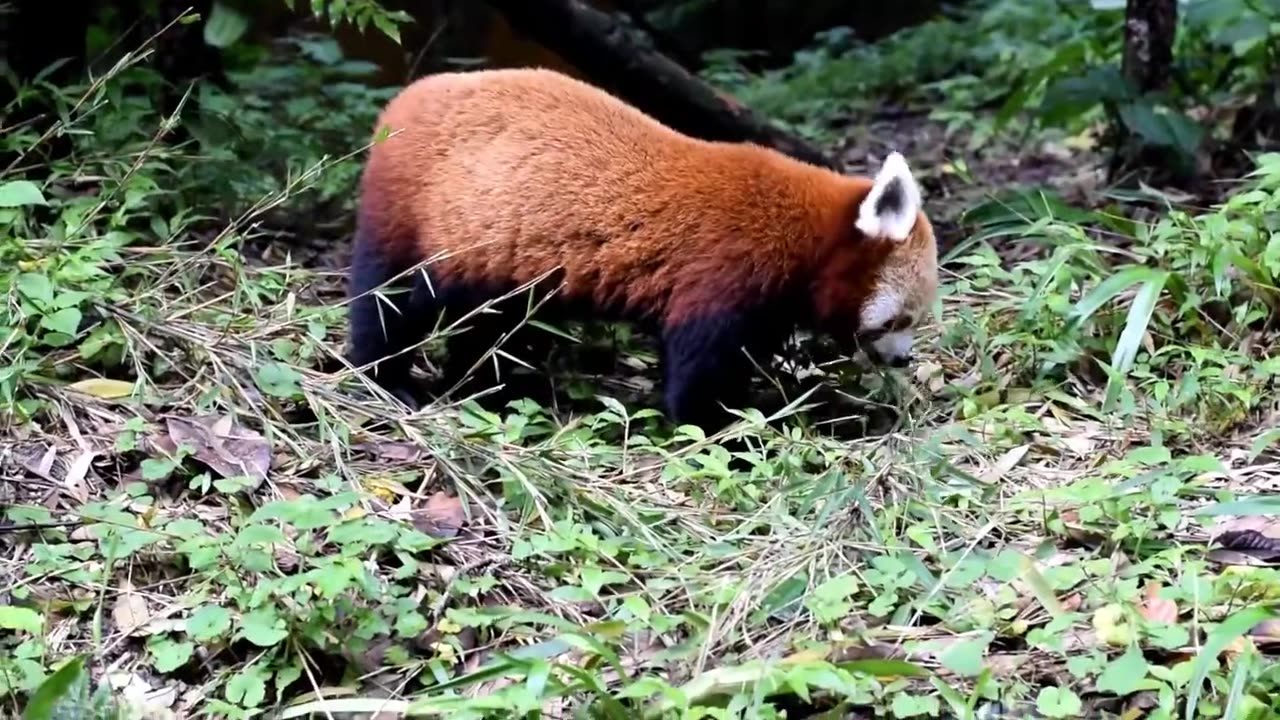Premium Only Content

About The Red Panda
The red panda, scientifically known as Ailurus fulgens but also affectionately referred to as the lesser panda, the red bear-cat, and the red cat-bear, is a captivating mammal endemic to the lush landscapes of the eastern Himalayas and southwestern China. It sports a lustrous coat of reddish-brown fur, a distinctive long and shaggy tail, and a charming waddle in its step, a result of its relatively shorter front legs. Although it shares a similar size to a domestic cat, its physique boasts a longer body and a somewhat heftier presence. This enchanting creature predominantly leads an arboreal lifestyle, relishing its diet with a primary menu of bamboo, occasionally accompanied by eggs, birds, and insects. Red pandas are often characterized as solitary beings, with their peak activity occurring during the twilight and early morning hours, while they tend to lead more sedentary lives during daylight.
Sadly, the red panda's status is one of concern, as it has earned the unsettling label of "endangered" from the International Union for Conservation of Nature (IUCN). The wild population, estimated at fewer than 10,000 mature individuals, continues to decline due to a confluence of factors including habitat loss and fragmentation, poaching, and the insidious specter of inbreeding depression. Even with protective measures in place under national laws within their respective range countries, the red panda's precarious existence remains imperiled.
Taxonomically speaking, the red panda stands as the sole living species within the Ailurus genus and the Ailuridae family. While previously associated with raccoons and bears, cutting-edge phylogenetic analysis resolutely supports its placement within the Ailuridae family, a unique classification that sets it apart from the raccoon and bear families. This family is part of the broader Musteloidea superfamily, sharing its genetic branch with fellow animal families such as weasels, raccoons, and skunks. Further distinguishing itself, the red panda is recognized through two subspecies and maintains an intriguing genetic distance from its large and iconic counterpart, the giant panda, which traces its roots to the basal ursid lineage.
-
 LIVE
LIVE
Drew Hernandez
10 hours agoMASS CONFUSION AROUND CHARLIE'S MURDER
1,421 watching -
 1:01:40
1:01:40
HotZone
6 days ago $4.64 earned"Prepare for WAR" - Confronting the URGENT Threat to America
63.1K16 -
 20:23
20:23
Scammer Payback
10 hours agoTerrifying Scammers with File Deletions
35.9K9 -
 16:22
16:22
The Gun Collective
7 hours agoWOW! 17 New Guns JUST GOT RELEASED!
44.2K10 -
 1:13:57
1:13:57
Glenn Greenwald
8 hours agoYoung Men and Online Radicalization: Dissecting Internet Subcultures with Lee Fang, Katherine Dee, and Evan Barker | SYSTEM UPDATE #516
171K71 -
 1:14:57
1:14:57
Sarah Westall
5 hours agoCEO of Crowds on Demand: The Fake World of Social Media, Protests & Movements w/ Adam Swart
61.1K7 -
 4:03:25
4:03:25
Geeks + Gamers
8 hours agoTuesday Night's Main Event
78.5K2 -
 40:36
40:36
RiftTV
7 hours agoHow We Got 400 Leftists FIRED for MOCKING Charlie Kirk | The Rift | Guest: Olivia Krolczyk
73.9K59 -
 1:28:58
1:28:58
Badlands Media
20 hours agoBadlands Story Hour Ep 134: Godzilla Minus One
46.3K7 -
 1:33:43
1:33:43
Patriots With Grit
16 hours agoWrongful Death Without Consequences: Inside the Schara Trial | Scott Schara
23.4K1